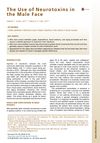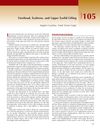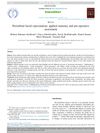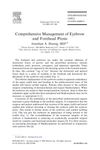Lateral Oblique Forehead Lines: Redefining Sleeping Lines and Treatment with Botulinum Toxin A
June 2013
in “
Journal of Cosmetic Dermatology
”
TLDR Lateral oblique forehead lines are caused by muscle movement, not sleep positions, and can be treated with botulinum toxin A.
The study redefined "sleeping lines" as lateral oblique forehead lines, attributing their formation to muscle contractions rather than sleeping positions. The authors argued that these lines were caused by the powerful contraction of the frontalis and orbicularis oculi muscles, rather than contact with a pillow. They presented evidence that these lines were bilateral, symmetrical, and more common in men with strong muscles. The study included two case reports where injections of botulinum toxin A (BoNT A) were used to treat these lines, resulting in a significant reduction in their depth and improved aesthetic appearance. This redefinition suggested that BoNT A could effectively minimize these lines by reducing muscle overactivity.





